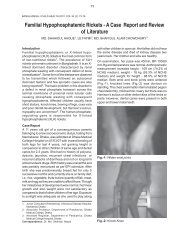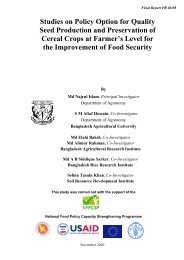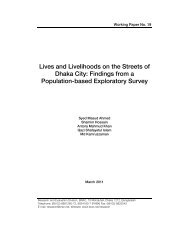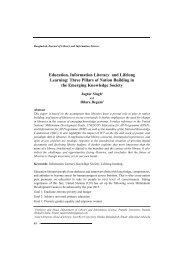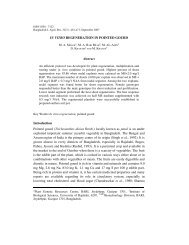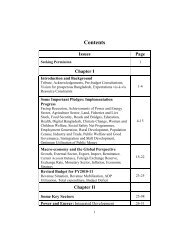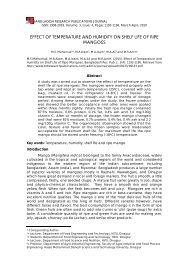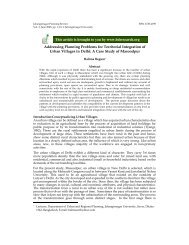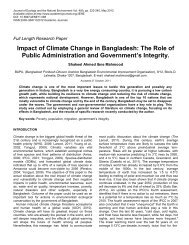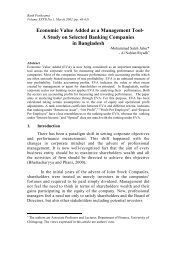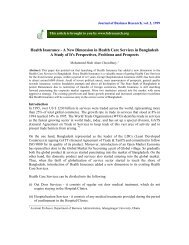Acceptability, Comprehensibility and Reported Influence - BRAC ...
Acceptability, Comprehensibility and Reported Influence - BRAC ...
Acceptability, Comprehensibility and Reported Influence - BRAC ...
Create successful ePaper yourself
Turn your PDF publications into a flip-book with our unique Google optimized e-Paper software.
16. Sood S, Ch<strong>and</strong>ra U, Mishra P, Neupane S. Measuring the effects of behavior change<br />
interventions in Nepal with population based survey results. Johns Hopkins Bloomberg<br />
School <strong>and</strong> Public Health. Center for Communication programme, 2004.<br />
http://www.jhpiego.org/resources/pubs/mnh/mnhSurveyRpt_Nepal.pdf(accessed<br />
16.02.2011).<br />
17. Vaughan PW, Regis A, Catherine F. Effects of an entertainment-education radio-soap<br />
opera on family planning <strong>and</strong> HIV prevention in St.Lucia. Int Fam Plann Perspectives<br />
2000;26(4):148-57.<br />
18. Lantican CM: Behavioral change communication <strong>and</strong> advocacy <strong>and</strong> information <strong>and</strong><br />
communications technology as tools for population <strong>and</strong> development <strong>and</strong> poverty<br />
reduction; selected papers of the fifth Asian <strong>and</strong> Pacific Population Conference.<br />
http://www.unescap.org/esid/psis/population/popseries/apss158/part2_4.pdf(accessed<br />
22.02.2011)<br />
19. Afsana K, Rashid SF. Discoursing birthing care: experiences from Bangladesh. Dhaka:<br />
The University Press Limited.2000;128p<br />
20. Banu M, Nahar S, Nasreen HE. Assessing the manoshi referral system. addressing<br />
delays in seeking emergency obstetric care in Dhaka slums. Dhaka: <strong>BRAC</strong>, 2010.20p<br />
(Manoshi Working Paper No.10).<br />
21. Salam SS, Khan MA, Salahuddin S, Choudhury N, Nicholls P, Nasreen HE. Maternal,<br />
neonatal <strong>and</strong> child health in selected northern districts of Bangladesh. findings from<br />
baseline survey 2008. Dhaka: <strong>BRAC</strong>,2008.<br />
22. Guin LA. Triangulation: establishing the validity of qualitative studies.FCS6014, Institute of<br />
Food <strong>and</strong> Agricultural Sciences, University of Florida, 2002. http://www.raymanbacchus.net/uploads/documents/Triangulation.pdf(accessed<br />
22.02.2011).<br />
23. Oliver DG, Serovich JM, Mason TL. Constraints <strong>and</strong> opportunities with interview<br />
transcription: towards reflection in qualitative research. Soc Forces. 2005;84(2):1273-89.<br />
24. Shrivastava A, Thomson AB. Framework analysis: a qualitative methodology for applied<br />
policy research. JOAAG 2009;4(2):72-9.<br />
25. Rabiee F. Focus group interview <strong>and</strong> data analysis. Proceedings of the Nutrition Society.<br />
2004;63:655-60.<br />
26. Graneheim UH <strong>and</strong> Lundman B. Qualitative content analysis in nursing research:<br />
concepts, procedures <strong>and</strong> measures to achieve trustworthiness; Nurse Edu Today<br />
2004;24:105-12.<br />
27. Burnard P. A method of analysing interview transcripts in qualitative research. Nurse Edu<br />
Today 1991;11:461-6.<br />
28. Community based interventions that improve newborn health outcomes: a review of<br />
evidence in south asia. Evidence review series-5 2008.<br />
http://www.intrahealth.org/~intrahea/files/media/maternal-neonatal-<strong>and</strong>-childrenshealthfamily-planning/ER_Brief_NBC%205.pdf<br />
(accessed 25.7.10).<br />
29. Mosquera M, Obregon R, Lopez R. Behavior change communication strategy for child<br />
health 2008. http://www.basics.org/documents/12-Timor-Leste-BCC-Strategy-for-Child-<br />
Health_Draft.pdf (accessed 22.02.2011).<br />
30. Leventhal H. Changing attitudes <strong>and</strong> habits to reduce risk factors in chronic disease. Am<br />
J Cardiol 1973;31:571-80.<br />
31. Cassell MM, Jackson C, Cheuvront. Health communication on the internet: an effective<br />
channel for health behavior change J Health Communi: Int Pers 1988;3(1):71-9.<br />
30 RED Working Paper No. 21



